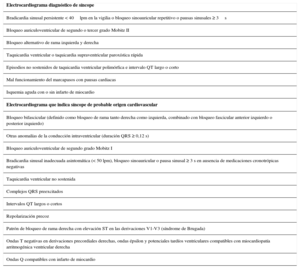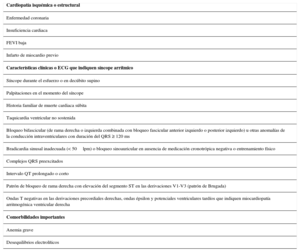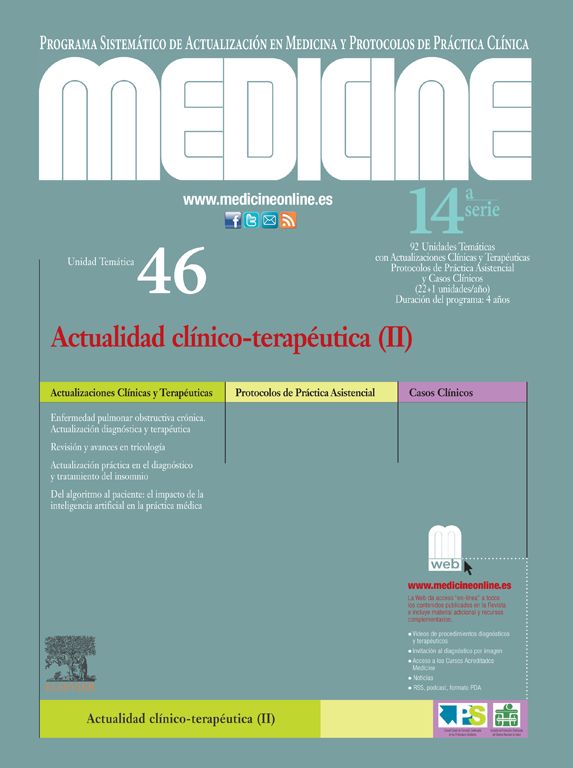El manejo del síncope en Urgencias requiere de una adecuada anamnesis y exploración que, en primer lugar, distinga el síncope de otras causas de pérdida de conocimiento. La anamnesis debe incluir preguntas sobre las circunstancias desencadenantes, pródromo previo, duración, comportamiento durante el síncope, clínica al final del mismo y antecedentes de síncopes y enfermedad cardiaca. El electrocardiograma es una herramienta clave en el diagnóstico. Puede ayudar a filiar la causa del síncope e identificar causas graves que requieran tratamiento urgente. Para los síncopes sin etiología clara se deben realizar pruebas de imagen y analítica para descartar causas secundarias importantes. Es necesario estratificar el riesgo para valorar si son necesarios más estudios, tanto en el momento urgente como de forma programada.
Palabras clave
Management of syncope in the emergency requires an adequate history and examination that, first, distinguish syncope from other blackouts. The history should include questions about the circumstances triggers, prodrome prior, duration, behavior during syncope, clinic at the end of it and a history of syncope and heart disease. The electrocardiogram is a key tool in the diagnosis. It can help you to found the cause of syncope and identify serious causes that require urgent treatment. For syncope without clear etiology should be necessary an analytical test and imaging to rule out secondary causes important. Risk stratification is necessary to assess whether further studies are needed, both at the Urgent time as a scheduled time.
Keywords
Identifíquese
¿Aún no es suscriptor de la revista?
Comprar el acceso al artículo
Comprando el artículo el pdf del mismo podrá ser descargado
Teléfono para incidencias
De lunes a viernes de 9h a 18h (GMT+1) excepto los meses de julio y agosto que será de 9 a 15h





